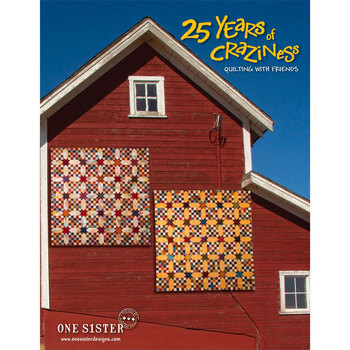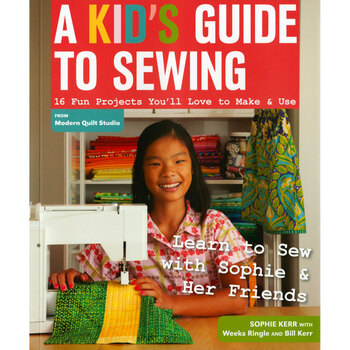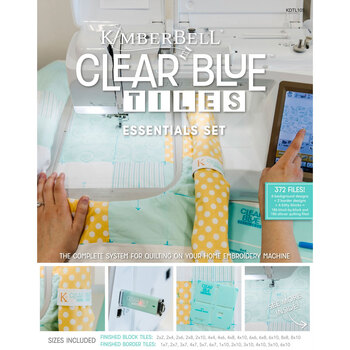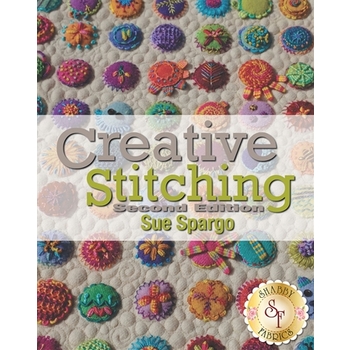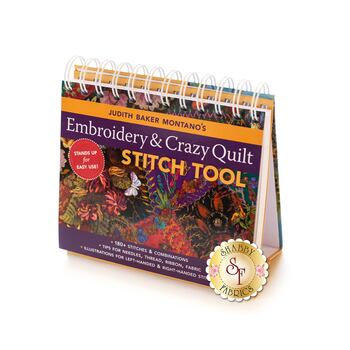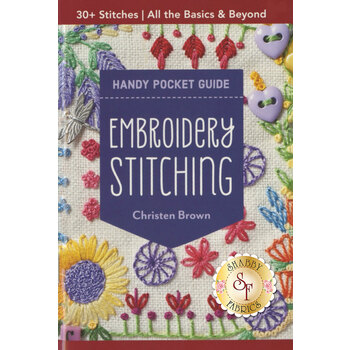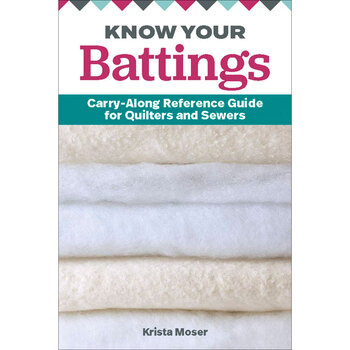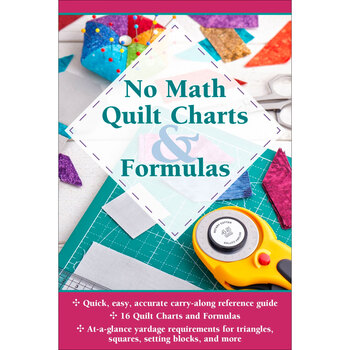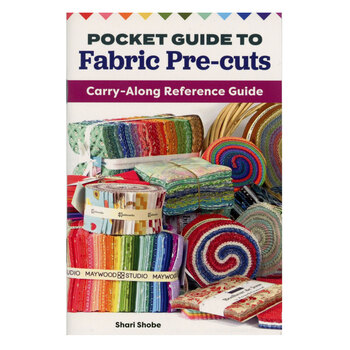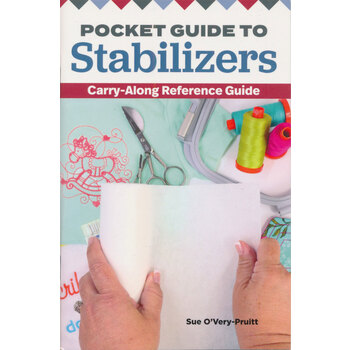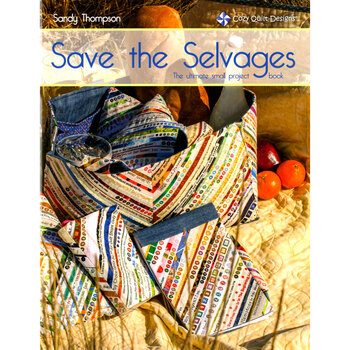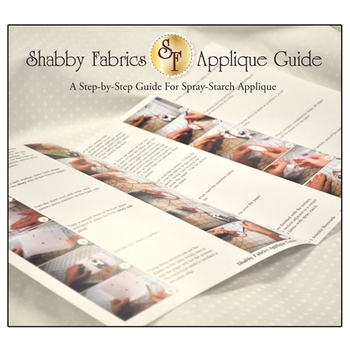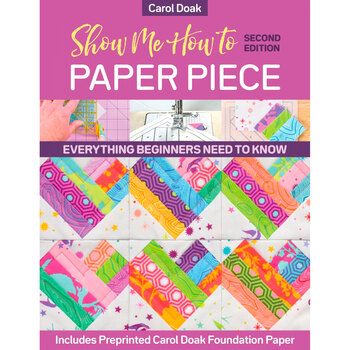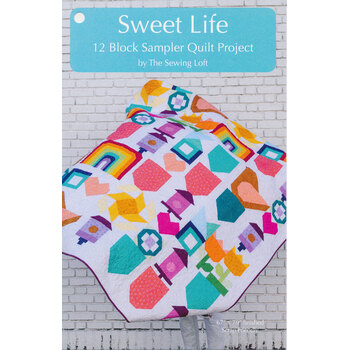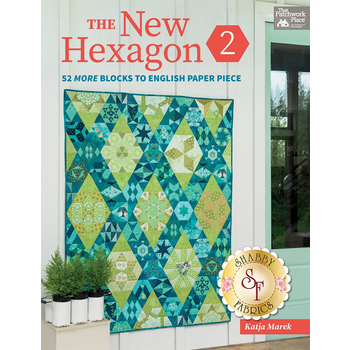Reference & How-To

Moda Reference Guide
Learn to Quilt Patterns and Reference Guides for Sewing and Embroidery available at Shabby Fabrics
Frequently Asked Questions About Reference & How-To
If you like a fabric, get a yard.
In EPP, the quilter is working with fabric pieces that are in the shape and size of the finished patchwork, piecing it together as you would a puzzle.
EPP requires the quilter to cut out each shape and baste the fabric and paper templates together using either thread or glue before getting started.
EPP traditionally uses hand-stitching (or machine-stitching) to carefully sew only the touching edges of the fabric seams together.
EPP uses heavier card stock paper that can be removed from the shaped fabric and reused again and again.
In FPP, the quilter is working with fabric pieces that are larger than the finished size and include seam allowances as they work from the center of a piece, layering outward.
FPP typically uses a sewing machine (though it can also be sewn by hand) to adhere the fabric pieces directly onto the paper pattern, cutting them to size as more are added.
FPP allows the quilter to get started right away, using a sewing machine to sew right onto the paper, but requires the quilter to measure seam allowances for each fabric piece as they go.
FPP, because of the difference in the way paper is used to stabilize and piece the fabrics together, the paper used is a lighter or standard weight paper that is torn from the finished seams and discarded.
Be sure to watch our tutorial videos for Foundation Paper Piecing for expert advice and demonstration from Jen!
English Paper Piecing (EPP) is a patchwork quilting technique where fabric is cut into smaller shapes to be pieced together, using paper (or templates) as a temporary stabilizer and guide. EPP is favored for its ability to create larger designs with more precision than is possible using a sewing machine.
In EPP, pre-cut fabric shapes are adhered to and folded around matching card stock shapes in a process called ‘basting’, making the fabric shape the exact size it will be when the patchwork is finished. These pieces fit together much like a puzzle and allow the quilter to rearrange different fabrics in new designs and see the actual size and shape of the finished project. Traditionally, EPP is hand-sewn, though modern quilters have incorporated the use of sewing machines for added convenience and speed.
Once the shapes are arranged and carefully sewn together, avoiding the card stock edges, the card stock is removed and can be used again and again.
Be sure to check out our English Paper Piecing video tutorials and follow along with Jen for expert advice and demonstration!
Foundation Paper Piecing (FPP) is a piecing technique that uses paper as a stabilizer for fabric pieces that are sewn together one at a time, working from the inside of a shape outward to create a mosaic-like image. FPP is an especially fantastic technique for working with tiny fabric pieces and complicated images.
In FPP, a sewing machine is used to adhere the fabric pieces directly onto the back side of the printed paper pattern, cutting them to size as more are added. The quilter is working with fabric pieces that are larger than the finished size and include seam allowances as they work from the center of a piece, layering outward. Measuring a ¼” seam as each fabric is attached to the growing work, quilters then trim any excess fabric, keeping the edges neat and ensuring the perfect size every time.
Because of the way paper is used to stabilize the fabric in one piece, serving as the foundation on which patchwork is attached, the paper used is a lighter freezer weight or standard weight paper that is torn from the finished seams and discarded once the patchwork is finished. Some quilters opt to leave the paper inside the finished project, especially if it's a decor item that would not need to be washed.
Follow along with Jen in our Foundation Paper Piecing video tutorials to see this technique in action along with some helpful tricks to make this your new favorite piecing technique!
Traditional appliqué is done by tracing and cutting out your templates by hand, turning the edges, and stitching down your pieces either by hand or machine. To learn how to do traditional appliqué, watch Jen Bosworth's appliqué tutorial series on the Shabby Fabrics YouTube page.
With laser-cut appliqué, all your appliqué shapes are precut by a laser-cutting machine and pre-fused with a fusible webbing. All you need to do is peel off the backing, iron it to your fabric, and stitch around the edges. To try out a simple laser-cut appliqué, you can purchase some of our precut and pre-fused Shabby Shapes.
Quilting notions are the tools and supplies you use to create a quilt. These can include rotary cutters, rulers, mats, pins, marking tools, marking pens and other basic sewing items.
To measure and cut fabric for quilting, you should use quilting rulers and a rotary cutter. It is important to ensure that your fabric is square and that your cuts are accurate. Our preferred brand of rulers is Creative Grids.
To assemble a quilt top, you will need to sew together the quilt blocks or squares. This can be done using a sewing machine or by hand.
To quilt the layers of a quilt together, you will need to sew through the top, batting, and backing of the quilt. This can be done using a sewing machine or by hand.
To bind a quilt, you will need to sew a strip of fabric around the edges of the quilt. This can be done by machine or by hand. The most common width of strips are 2-1/4" or 2-1/2" strips.
The best project to begin with to learn how to quilt is a quilt block. There are many ways to use a quilt block in a project when you're finished; You can make a pillow, wall hanging, or make more to stitch together into a larger quilt. The possibilities are limited only by your imagination! We recommend using a pattern to start but there are lots of ways for you to add your own personal touches. Be sure to check out our Learn to Quilt video series to follow along with Jen as she walks you through making your very first quilt with helpful tutorials, tips, and tricks!
Width of Fabric. The width of fabric is the entire length from selvege to selvege. Most fabric widths are between 42" and 45".
A quarter yard is cut perpendicular to the selvege, all the way across the fabric. It measures approximately 9" x 43".
A fat quarter is a half yard (measuring approximately 18" x 43") cut in half resulting in a wider, shorter rectangle measuring approximately 18" x 21".

